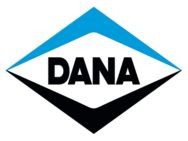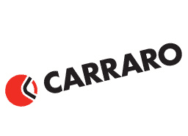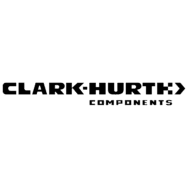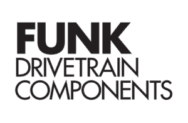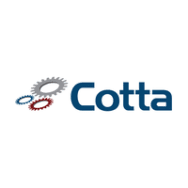Author Archive
Posts by ClutchAdmin:
Here at K&L Clutch, we don’t just supply our clients with critical industrial transmission parts like pneumatic clutches and torque converters. We keep companies drilling, digging, dredging, and doing the work that powers the world.
In other words, our goals exist to make it easier for companies to achieve their’s.
Just take a look at Norfolk Dredging “” a company we’re proud to support, especially in the most demanding work environments. According to Building and Construction Northeast Magazine:
One of the company’s most recent triumphs, for example, was the Hubline Project for Algonquin Gas Transmission Co. “” a 29-mile long, 30-inch steel pipeline installed under Massachusetts Bay. It is the longest undersea gas line in New England, and was built to carry natural gas for local and regional markets. […]
Complicating matters was the location of the work, the company adds. “The uniqueness of this restoration project is that Norfolk Dredging Co. had to perform this work some five miles offshore in the Atlantic Ocean, in the middle of winter, digging to depths of 120 feet over an active high-pressure gas pipeline, while working under a rigidly defined time frame for completion,” it says. Nevertheless, the work was completed on time and without incident.
No excuses. They just got the job done.
We’ve been working with crane and dragline companies like Norfolk Dredging for more than 30 years “” and this company typifies the sort of relationships we aim to build with our clients.
The key is customer service, because professional service capabilities can make the difference between project profitability and failure “” especially since so many industries we work with are hard at work around the clock in hostile work environments.
In the end, customer service is a state of mind. From our headquarters in the Dallas-Ft. Worth Metroplex, this mission revolves around a series of service capabilities:
- Fully-equipped service trucks that come to you.
- 24/7, round-the-clock readiness.
- Expert technicians and staff.
- An innovative in-house machine shop that provides customized solutions to unique challenges.
- A comprehensive catalog, including parts from companies like Twin Disc, Clark, Allison, Rockford, and Oil States.
- Same-day shipping.
- An ideal location just nine miles from Dallas-Ft. Worth International Airport
- The willingness to go anywhere in the world we’re needed, and the experience to do so effectively.
Time is money when you’re out in the field, and even a small breakdown can be crippling to your project’s finances. When you need service, you need it then and there””not in three to five shipping days needed to get the right tools for the fix (or even the three to five hours it takes an ill-equipped company to get the industrial transmission part into the right place) and that’s where K&L comes in with our fully-equipped field service trucks.
Our field service trucks are carefully designed to respond to the complex and ever-evolving needs for job-sites in industries like oil, gas, mining and construction. Our trucks will come to you””24/7, wherever you’re working””and they’ll come armed and ready to get the job done.
Let’s take a closer look at what they carry:
A 5,000-Pound-Capacity Auto Crane
A heavy-duty Auto Crane makes it much easier to respond to demanding industrial power service needs, and gives us the flexibility and accuracy needed to do fixes in hard-to-reach places.
Why? Reach and lifting abilities matter. If we just showed up with the right tools and replacement parts, but no way to easily position them to where they need to be, additional time and manpower would be wasted trying get everything in the right place.
The cranes feature rack-and-pinion rotation systems””resulting in the high torque needed for heavy lifting and positioning””and rotational cylinders guarded by flow controls and load-holding valves, which boost safety and operational precision. All together, this makes repairing or replacing equipment like torque converters, mechanical clutches and pneumatic clutches simple.
In other words, the 5,000-pound Auto Cranes on our trucks make sure they arrive ready to work.
Complete, Customized Tool Capabilities
There’s nothing more dismaying than a service provider showing up unprepared or unable to do the job. From the heaviest-duty appliances to the smallest hand tools, we’ll arrive with everything needed to install and service the wide range of units we sell.
In fact, at our headquarters in the Dallas-Ft. Worth Metroplex, we thrive on coming up with customized solutions to unusual and unexpected problems. Our tool sets reflect these diverse, nimble solutions capabilities.
Machine Shop Support and Talent
In the end, what’s on our truck is only as good as the people that arrive with it. And thanks to our extensive support experience, our technicians are simply the best in the business. Headquartered just nine miles from DWF International Airport in the town of Hurst, we’re also ideally located to get them to jobs all over the country.
Furthermore, as with our tool sets, our North Texas machine shop and service center gives us the backing needed to solve problems specific to your job’s unique needs and situation. We’ll get you back up and running in no time.
Contact one of industrial clutch and transmission service specialists for more information.
24-Hour Field Service & Troubleshooting
Time spent not working is money poured down the drain, so the ability to respond instantly as soon as a breakdown happens is critical. Nonstop service capabilities can make the difference between project profitability and failure “” especially since so many industries we work with are hard at work around the clock. From our service center and machine shop in North Texas, we can respond at any time a need arises, providing excellent industrial equipment services.
Factor in time zone changes, and this flexibility becomes even more vital””when work breaks down in the middle of the day in the Middle East, you shouldn’t have to wait until the normal business day starts up again in Dallas to get technical support and troubleshooting advice. Read Full Article →
At KL Clutch, we’re proud to provide both VC-style and CB-style pneumatic clutches “” the sort rugged enough for peak, reliable performance out in the oilfields, and flexible enough to be provide pneumatic clutch solutions across a variety of other industrial applications using air clutches.
Both are constricting-type clutches featuring Oil State’s ELASTA-FLEX drum clutch elements””a flexible, fabric-reinforced inflatable elastomeric tube that expands radially inward””designed for severe, demanding clutch applications. When the tube constricts, it pushes the friction shoes against an outer cylindrical drum surface, which makes it easy to accurately determine and control element torque capacity.
Let’s take a look at the unique capabilities of each:
VC-type pneumatic clutches: Better heat dissipation. Higher torque capabilities. Increased longevity.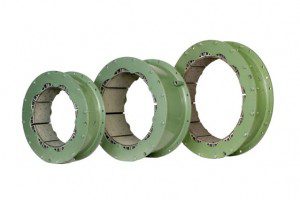
VC elements were principally designed for severe, high-torque, high-thermal capacity clutching in heavy machinery with high starting loads. In other words: toughness, toughness, toughness.
By design, torque gets transmitted via torque bars from the side plates to the friction shoes. They work well for a few reasons: A well-ventilated construction improves heat dissipation from the friction shoes and cooling airflow. And the clutches boast high torque ratings, which makes it easy to use smaller diameter units (better for lowering contact velocity on high-speed applications). Because of what’s required of them, VC-style air clutches are in are in many ways considered to be the most trusty, tough styles of drum clutches.
A VC-style clutch might especially come in handy (compared to less efficient conventional clutches) if you’ve faced repeated clutch failures resulting from extensive slippage and high starting loads.
CB-type pneumatic clutches: torsional resilience and flexibility
CB-style air clutches, meanwhile, are most noted for their flexibility. Designed for power transmission in oilfield machinery, the CB elements work best in high-speed, medium-torque applications””especially those where high heat generation (as seen in VC applications) is less of a problem. CB torque also gets transmitted through a sort of flexible neoprene side wall and cord actuating tube, which lets minor, naturally occurring shaft misalignment happen without causing larger problems. The neoprene tube automatically tightens up when friction surfaces wear, providing constant compensation.
Out in the oilfield, the CB-types fit a more broad array of applications than VC types, including engine, slush pump, and PTO applications.
Contact our industrial clutch specialists to get a better idea of which pneumatic clutch suits your needs.

Quincy 350 Air Compressor
Mobile. Tough. Reliable. That’s what most of our clients need from their air compressors, and, at K&L Clutch, that’s what we’re eager to provide.
From our base in the the Dallas-Ft. Worth area, we proudly provide the Quincy QRNG 350 air compressor, which features an air-cooled, two-stage, two-cylinder, pressure-lubricated compressor and a long, long history of top-of-the-line performance and lifespan. Read Full Article →
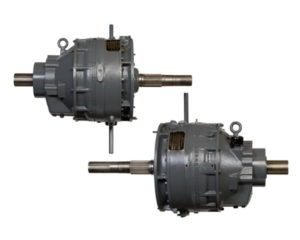
Industrial Torque Converter
Industrial torque converters provide the torque and horsepower that makes your projects go””but they’re not immune to breakdowns.
The torque converter is the part of your machine that controls how much fluid is passed on to the transmission. It also allows your engine to continue to run while completely stopped. If this specific component of the machine happens to malfunction, it can cause strange behavior such as slipping. The difficult part is trying to diagnose what the exact cause of the torque converter malfunctioning is. There can be many causes for problems with torque converters.
It can be difficult to separate an issue with the transmission from problems with torque converters. Yet, there are some signs you should be aware of that can help you pinpoint what the issue is, whether that issue be with the transmission or the torque converter.
Take a look at the three common torque converter problems you might run into:
1. Overheating
The most likely problem you’ll run into is overheating. Overheating can usually be directly traced to low converter fluid pressure and/or air present in the system. This can be caused by several factors, including:
- The fluid levels get too low
- The filter gets clogged
- The suction lines are cracked
- The charging pump is beginning to fail
Overheating can damage the seals, o-rings, and gaskets leading to fluid leaks and a lack of proper fluid circulation.
2. Deformed Blades
Fragmented or deformed turbine blades is another sure way to see an industrial torque converter quickly lose its effectiveness. This can happen as a result of rapid overheating of the torque converter or contamination ingested into the system which can lead to the turbine blades beginning to break and pull away from the hubs. With extreme heat, the blades can even break into pieces. Torque converters with deformed or fragmented blades require significant and expensive repairs (or a complete rebuild) to avoid a prohibitive loss of torque converter efficiency.
3. Proper Installation
When installing a new torque converter, it is best practice to install new cooler lines and have the radiator/cooler professionally cleaned. This ensures that all contamination from the previous converter installation is removed from the system. If coolers and lines are not clean, then debris from the previous converter failure will be ingested into the new converter causing a very quick and costly failure.
If you’ve been in this field long enough, you’ve likely dealt with a few common torque converter problems. Although we are confident in the excellent capabilities, and reliability, of the torque converters we provide, we also know that problems do occasionally arise. Considering the extreme mechanical feats of your heavy machinery, and the tasks required of the torque converters in those machines, this makes sense. What also makes sense, then, is being prepared and understanding the signs and symptoms of these common torque converter issues.
So, how can you tell when one of those issues is happening to your machinery? keep an eye out for these common symptoms of torque converter problems:
From our home office in Hurst, Texas, we supply only the best torque converters from the best brands. But we also stock a full catalog of replacement and repair parts, can manufacture customized specialty parts from our warehouse and can meet you with a service team just about anywhere in the world should you have a problem.
We’d like to take a minute and look at common symptoms to help you recognize when something has gone wrong. If you spot the problems early, they will be much easier and cheaper to fix.
SYMPTOM ONE ““ NO POWER FROM THE CONVERTER
A torque converter failure can seriously ruin a good day. You’re out in the field, slamming away at some major task worthy of an episode of Modern Marvels, and suddenly your giant Tonka starts pushing like it did when you were a kid. The engine’s running, and the pedal is pumping, but you’re getting nothing out of it. As the name suggests, your torque converter plays a vital role in converting horse power to torque. When you need it to provide you with power, you need to allow enough time for pressure to form. If it doesn’t, you won’t get the power you need. Give it time, don’t force it, and you may save yourself from a bad day.
SYMPTOM TWO ““ SURGING AND LAGGING
The death lurch. We all know it’s coming, but we never expect it to actually happen. Some machines go way too young, others seem to last forever. But so many good machines could be saved each year if owners payed attention to a few telltale signs of torque converter problems. The shudder. The jerk. They’re not dance moves, they’re problems.
When the machinery you are using feels as though it is shuddering, the problem may be the torque converter. Since the shuddering happens randomly, without rhyme or reason, you should get your transmission checked out as soon as you can.
If your machine is surging or lagging during operation, and can’t maintain constant speed, power or lift, then you may be dealing with erratic converter fluid pressure or flow. This could be due to low converter fluid in the day tank and/or air present in the converter fluid circuit. Check these levels, take care of them, and you won’t regret the extra time you spent on getting extra time from your converter.
SYMPTOM THREE ““ POWER LOSS DUE TO CLUTCH SLIPPAGE
Sometimes, after heavy acceleration, your clutch may slip. It may make you think that the converter is losing power, and that’s understandable. That’s what it feels like. But the engine is making power that the torque converter never sees, and it’s just the master clutch assembly that’s not transferring that power. With a simple clutch adjustment, you could be up and running in no time. If this condition goes untreated for too long, however, excessive damage will occur to your master clutch assembly, requiring removal and replacement. The key to saving money is maintaining your equipment and fixing problems quickly, before they grow into bigger problems.
SYMPTOM FOUR – FLUID CONTAMINATION
Another issue that points to torque converter problems is contamination in the fluid. If, when you check the fluid, you find thick clumps of dark material, either the clutches of the torque converter is damaged, or there is an issue with the transmission. Perform a fluid change before you assume the problem is the torque converter. Then, try and run the machinery for a while, and check back on it later.
SYMPTOM FIVE – SLOW ENGAGEMENT
With a ruined torque converter, the transmission will take longer than usual to engage the engine. This slow engagement results in higher stall speeds. Check you engine’s stall speed specifications, then perform a stall speed test based on the specifications listed, in order to diagnose for any torque converter issues.
Using machinery with a bad torque converter is extremely dangerous, and doing so exacerbates the symptoms listed above. Once you have identified that the torque converter is the problem, you will need to get it replaced by professionals. This particular piece of the machinery is delicate and complicated. Therefore, it should not be fixed by the average person. Otherwise, more damage to the equipment could occur.
At K&L Clutch, we provide only top-of-the-line torque converters from brands like Twin Disc, Allison, American, Clark, and more. But in those rare times when problems arise, our unparalleled service department can get you back up and running again in no time “” whether that’s from our home in Hurst, Texas, or from just about anywhere in the world you need us to be. Take a second from time to time to inspect your torque converter for visible problems like fluid levels, pressures and clutch adjustment to catch potential problems before they show up, but know that we’re here for you when more serious problems arise. Contact us for more information.
 From construction to freight to salvaging forsaken ships at sea, current and early cranes are simply the arms that do the heavy lifting powering our global industries. The world just wouldn’t be the same without them””and it’s our goal to make sure your cranes will perform powerfully, flexibly, and effectively until the jobs are done.
From construction to freight to salvaging forsaken ships at sea, current and early cranes are simply the arms that do the heavy lifting powering our global industries. The world just wouldn’t be the same without them””and it’s our goal to make sure your cranes will perform powerfully, flexibly, and effectively until the jobs are done.
So how did cranes become such an integral part of all of our lives (whether we realize it or not)? Let’s take a look back through history:
Democracy and Devotion: Greeks Invent the Crane
Necessity is the mother of all innovation””and you won’t find a more urgent group of inventors than those under threat of being smote from above. For whatever reasons, the Ancient Greeks felt compelled to build huge temples to their gods, and traditional methods like ramps for moving and lifting the enormous building stones of massive monuments like the Parthenon just weren’t going to get the jobs done. Meet the crane: at first a simple winch and pulley system, and later a compound pulley system credited to Aristotle.
Today, you can see the difference in the way temples were built in different time periods. Pre-cranes, building blocks actually tended to be much larger, because so much effort was required to push each one up a ramp that it was less labor-intensive to use bigger and fewer blocks. Post-cranes, blocks were smaller, but stacked higher, in more complicated and advanced structures, and more quickly.
In the end, the Greeks proved just how much more ambitious projects could be with the help of a crane. The Egyptian slaves responsible for building the pyramids block by ramp-elevated block are still squirming with envy in their graves.
Mobility and Versatility: Cranes Power the Roman Empire
Rome wasn’t built in a day, but without the introduction of and improvement upon the Greek cranes, construction would’ve taken much, much longer than it did. In fact, the Romans were the first to use multiple cranes for cooperative lifting tasks, as is evident by the massive cornerstone blocks used in some of the famous structures.
But beyond the beautiful, historic, crane-built city still very visible today, perhaps the most impressive aspect of Roman crane use was the way they were used far from their home. Again””necessity drives innovation. And as the Roman Empire stretched further and further away from Rome, and as conquering armies became more and more ambitious, mobility and versatility in their cranes became key. The Roman army needed cranes that could move quickly, be assembled and torn down quickly, and perform a variety of tasks””all without losing their powerful lifting capabilities.
Today, you can see that influence in how mobile cranes are used all over the world. You find them on boats, docks, trains, and trucks, often able to be quickly adapted for difficult, unusual tasks. Lifting capacity has skyrocketed, up to 1,000 tons. In the end, the Romans proved just how much mobility and versatility multiply capability.
At K&L Clutch, we understand just how many ways your business relies on your lifting capabilities. When a crane breaks down, we can be there””just about anywhere in the world””with the industrial machine parts to get your project back on track in no time.

Young MOC-8 heat exchanger
Our Young MOC-8 heat exchangers help maintain oil pressure, avoid air flow resistance, and keep your machines running at peak performance better than any others in the industry.
But beyond industrial machinery, heat exchangers play several vital roles in shaping our modern world, from industry to nature to our own, fragile bodies.
Here are three facts you might now know:
1. They’re used all over the place
Anything that needs highly optimized cooling and heating, really, as heat exchangers can reduce heat loss and redirect it to other purposes. Various types of heat exchangers are used in industrial sectors like power plants, petroleum refineries, and chemical plants. They keep jet fuel from freezing at high altitudes. They make up an important part of the wine production process. And they help keep waste water treatment plants operating at optimal temperatures, fostering the growth of microbes that remove pollutants from the water.
2. A similar system can be found in… birds, fish, and whales
Basically, arteries carrying warm blood to the skin get crossed and exchange heat with veins carrying cold blood away. The result is basically a “countercurrent” heat exchanger that reduces overall heat loss in cold waters””for baleen whales when the swallow enormous amounts of water to catch their evening krill, for storks, flamingos, and other wading birds when they stand in cool water, and for fish while breathing underwater.
No word yet if anybody has modeled an industrial machine after a blue whale.
3. We couldn’t live without them
Similarly, human bodies perform heat exchanger functions in two ways: Thanks to their large surface area, the lungs help moderate and optimize the hot or cold air we breathe in, before the oxygen is passed on into the blood stream.
Contact us for more information.
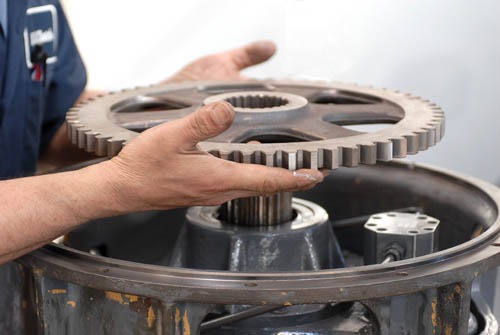
Our service department will come meet you just about anywhere in the world, and we’re proud of our commitment and reach. But we’re pretty proud of the service role our home location in Dallas-Ft. Worth plays as well.
Here are three reasons why:
We know it.
We’re located smack dab in the middle of one of the most powerful, innovative, high-growth industrial regions on the planet, and our fully-staffed service department reflects and benefits from such a concentration of expertise and capability. Simply put, we offer better, faster, and more comprehensive service than those who can’t capitalize on these advantages. We can figure out any problem, and come up with customized solutions for your unique needs.
Time is money, and our quick turnarounds minimize your project’s down time. We know how to get you back to work.
We stock it.
At our base in Hurst, Texas (a small suburb of Ft. Worth), we stock a comprehensive catalog of parts from the best brands in the business””like Twin Disc, Young, Allison, American, Clark, Bucyrys, Funk, Industrial Clutch, Link Belt, Lima, Manitowoc, Murphy, P&H, Oil States, Northwest, Quincy, Rockford Powertrain, and WPT””including parts for:
- Dredge Pump Drives
- Stationary Power Units
- Cranes
- Draglines
- Mud Pumps
- Rock Crushers
- Drilling Rigs
- Tub Grinders
- Marine Units
- And more…
Better stock equals better turnaround time, and our product catalog will have your project moving again in no time. But if it can’t…
We can build it.
At K&L Clutch & Transmission, we have a fully functional on-site manufacturing and production facility that gives us tremendous flexibility and the capability to meet your needs on the fly.
Just think about some of the problems that you run into out in the field. Often, there are no simple, by-the-book fixes. Our machine shop provides unusual, customized solutions for unusual, complicated problems, and leaves you with the peace of mind that any problem can solved.
Contact us for more information.
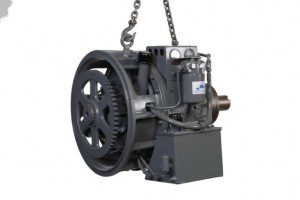
Torque Converter
We provide torque converters at K&L Clutch. Lots of them. Converters bursting with horsepower and grit. The best converters available anywhere in America. The kind you need””sometimes immediately””to get the work done, and the kind that won’t leave your valuable equipment investments vulnerable in the field.
In fact, as your torque converter provider, here’s our goal for you:
- Lower Maintenance Costs
- Increased Fuel Economy
- Increased Engine and Equipment Life
- Shock Protection from Load and Equipment Damage
- Smooth Operation at Optimum Efficiency Speed Ranges
- Less Downtime
Read Full Article →



 From construction to freight to salvaging forsaken ships at sea, current and early cranes are simply the arms that do the heavy lifting powering our global industries. The world just wouldn’t be the same without them””and it’s our goal to make sure your cranes will perform powerfully, flexibly, and effectively until the jobs are done.
From construction to freight to salvaging forsaken ships at sea, current and early cranes are simply the arms that do the heavy lifting powering our global industries. The world just wouldn’t be the same without them””and it’s our goal to make sure your cranes will perform powerfully, flexibly, and effectively until the jobs are done.


